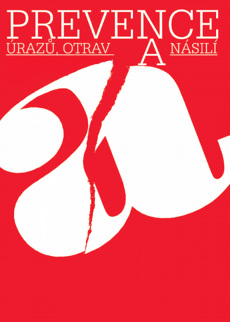Úmyslné sebepoškozování dětí v České republice – hospitalizované děti (v datech ÚZIS z období let 2000–10)
Deliberate self-infliction in children in the Czech Republic: hospitalized children (in ÚZIS data from period 2000–10)
Dominika Průchová
Jihočeská univerzita v Českých Budějovicích, Zdravotně sociální fakulta, Ústav zdravotně sociální
práce
Korespondenční autor: Dominika Průchová (dpruchova@seznam.cz)
ISSN 1804-7858 (On-line)
Full verze:
Submitted:5. 4. 2012
Accepted: 13. 11. 2012
Published online: 31. 12. 2012
Summary
Over recent years, children and adolescents solving their problems by aggression to themselves (self-inflicting injuries and suicides) are increasing in number. There are considerably diverse definitions in this field, but most of them respect several basic components. The target of the project was to analyze data concerning self-inflicting injuries in children under 18 years of age, who were hospitalized due to these events, to class the data acquired based on relevant criteria and to statistically evaluate relationships between variables. The method employed was secondary analysis of data from the Register of Hospitalized Patients of ÚZIS (Institute of Health Information and Statistics). We accumulated data from the whole Czech Republic, from the period of 2000–2010. In the Register of Hospitalized Patients of ÚZIS, total of 7223 cases of deliberate self-inflicting injuries were recorded over this period. Our data included children who were hospitalized. No data from outpatient departments were available. Total of 4829 (67%) of girls and 2394 (33%) of boys were hospitalized over this period. In girls, these events most frequently occur between 10 and 14 years of age, and in boys, there is a significant risk age between 15 and 18 years of in terms of the statistical evaluation. The most frequently chosen way of self-infliction was poisoning with medicines (73.6%) or with alcohol (11.7%). There are statistically significant relationships between the gender and age at the time of the self-infliction, gender and site of the self-infliction, gender and period of year, gender and duration of hospitalization, way of the self-infliction and site, duration of hospitalization, repeated hospitalization, and age. In the self-infliction prevention, the main sources of the support are the family, friends and school. Advisory institutions should be active in the field of the prevention, particularly in education of children and in helping, medical and social services.
Keywords: deliberate self-infliction in children – adolescence – hospitalization – way of self-inflicting – risk factors – auto-aggression
Souhrn
V posledních letech přibývá dětí a dospívajících, kteří řeší své problémy tím, že jsou sami k sobě agresivní (sebepoškozování a sebevraždy). Definice jsou v této oblasti značně rozmanité, ale většina respektuje několik základních komponent. Cílem projektu bylo analyzovat data týkající se úmyslného sebepoškozování dětí do 18 let, které byly z tohoto důvodu hospitalizované, získaná data roztřídit dle kritérií a statisticky zhodnotit vztah proměnných. Metodou byla sekundární analýza dat z Registru hospitalizovaných ÚZIS (Ústav zdravotnických informací a statistiky). Obdrželi jsme data z let 2000–10 z celé České republiky, celkem bylo v Registru hospitalizovaných ÚZIS za toto období zaznamenáno 7 223 případů úmyslného sebepoškození dětí. Do našich dat se dostaly děti, které byly hospitalizovány. Data z ambulantních zařízení jsme k dispozici neměli. Dívek bylo za toto období hospitalizováno 4 829 (67 %) a chlapců 2 394 (33 %). U dívek dochází nejčastěji k tomuto činu mezi 10–14 rokem věku a dále z hlediska statistického zhodnocení je pro chlapce významný – rizikový věk mezi 15.–18. rokem života. Nejčastěji voleným způsobem sebepoškození bylo v 73,6 % sebeotrávení léčivy a sebeotrávení alkoholem v 11,7 %. Statisticky významný je vztah tedy mezi pohlavím a věkem, kdy se úmyslně sebepoškozují, pohlavím a místem sebepoškození, pohlavím a ročním obdobím, pohlavím a délkou hospitalizace, způsobem sebepoškození a místem, délkou hospitalizace, opakovanou hospitalizací, věkem. Hlavními zdroji podpory v prevenci sebepoškozování jsou rodina, přátelé a škola. V preventivní oblasti by měly působit poradny, a to zejména ve vzdělávání dětí v orientaci ve službách pomoci, zdravotních a sociálních.
Klíčová slova: úmyslné sebepoškozování dětí – adolescence – hospitalizace – způsob sebepoškození – rizikové faktory – autoagrese
Literatura
1. Benešová V (2008). Suicidální jednání dětí a mládeže. Prevence úrazů, otrav a násilí, České Budějovice. 4/2: 123–130.
2. Bureau JF, Martin J, Freynet N, Poirier AA, Lafontaine MF, Cloutier P (2010). Perceived dimension of parenting and non-suicidal self-injury in young adults. J Youth Adolesc. 39: 484–494.
3. Bywaters P, Rolfe A (2002). Look Beyond the Scars: Understanding and Responding to self-injury and selfharm. London: NCH, 43 p. ISBN 0900984759.
4. Crosba J, Dinya E, Ferencz E, Páli E, Nagy E, Horváth A, Vados M (2010). A Study of Hungarian Adolescent Outpatients Suffering from Self-injurious Behaviour. Psychiatria Danubia, Zagreb. 22/1: 39–45.
5. Fortune S, Sinclair J, Hawton K (2008). Adolescents’ views on preventing self-harm. A large community study. Soc Psychiatry Psychiatr Epidemiol. 43: 96–104.
6. Hawton K, Harriss L, Hall S, Simkin S, Bale E, Bond A (2003). Deliberate self-harm in Oxford, 1990–2000: a time of change in patient charakteristic. Psychological Medicine. 33/6: 987–995.
7. Koutek J, Kocourková J (2003). Sebevražedné chování. 1. vyd. Praha: Portál, 128 s.
8. Kriegelová M (2008). Záměrné sebepoškozování v dětství a adolescenci. 1. vyd. Praha: Grada, s. 174.
9. McMahon EM, Reulbach U, Corcoran P, Keeley HS, Perry IJ, Arensman E. (2010). Factors associated with deliberate self-harm among Irish adolescents. Psychological Medicine, Cambridge. 40: 1811–1819.
10. Průchová D (2011). Child Suicide in the Czech Republic from 2002–2009. Journal of Nursing, Social Studies, Public Health and Rehabilitation. 2/3–4: 255–263.
11. Rossow I, Wichstrom L (2010). Receipt of Help After Deliberate Self-Harm Among Adolescents: Changes Over an Eight-Year Period. Psychiatric Services. 61/8: 783–787.
12. Sutton J (2005). Healing the Hurt Within: Understand Self-Injury and Self-Harm, and Heal the Emotional Wounds. 2nd ed. Oxford: How to Books, 486 p.
13. WHO Guide to Mental and Neurological Health in Primary Care (2004). 2nd ed. [online] [cit. 2011–12–06]. Dostupné z: http://www.whoguidemhpcuk.org/search.asp
14. Ystgaard M, Arensman E, Hawton K, Madle N, Heeringen K, Hewitt A, Wilde EJ, Leo DD, Fekete S (2009). Deliberate self-harm in adolecscents: Comparison between those who receive help following self-harm and those who not. Journal of Adolescence. 32: 875–891.
